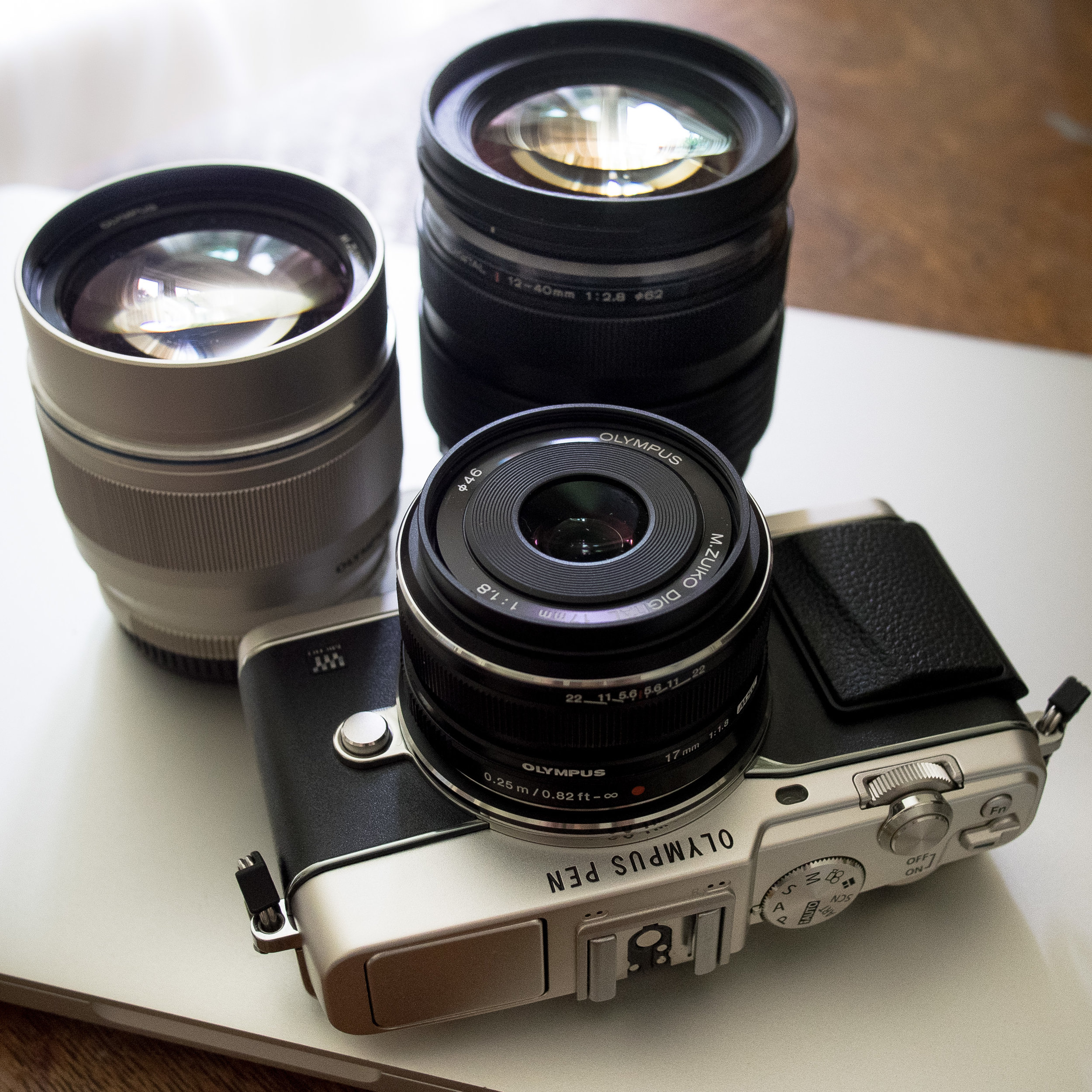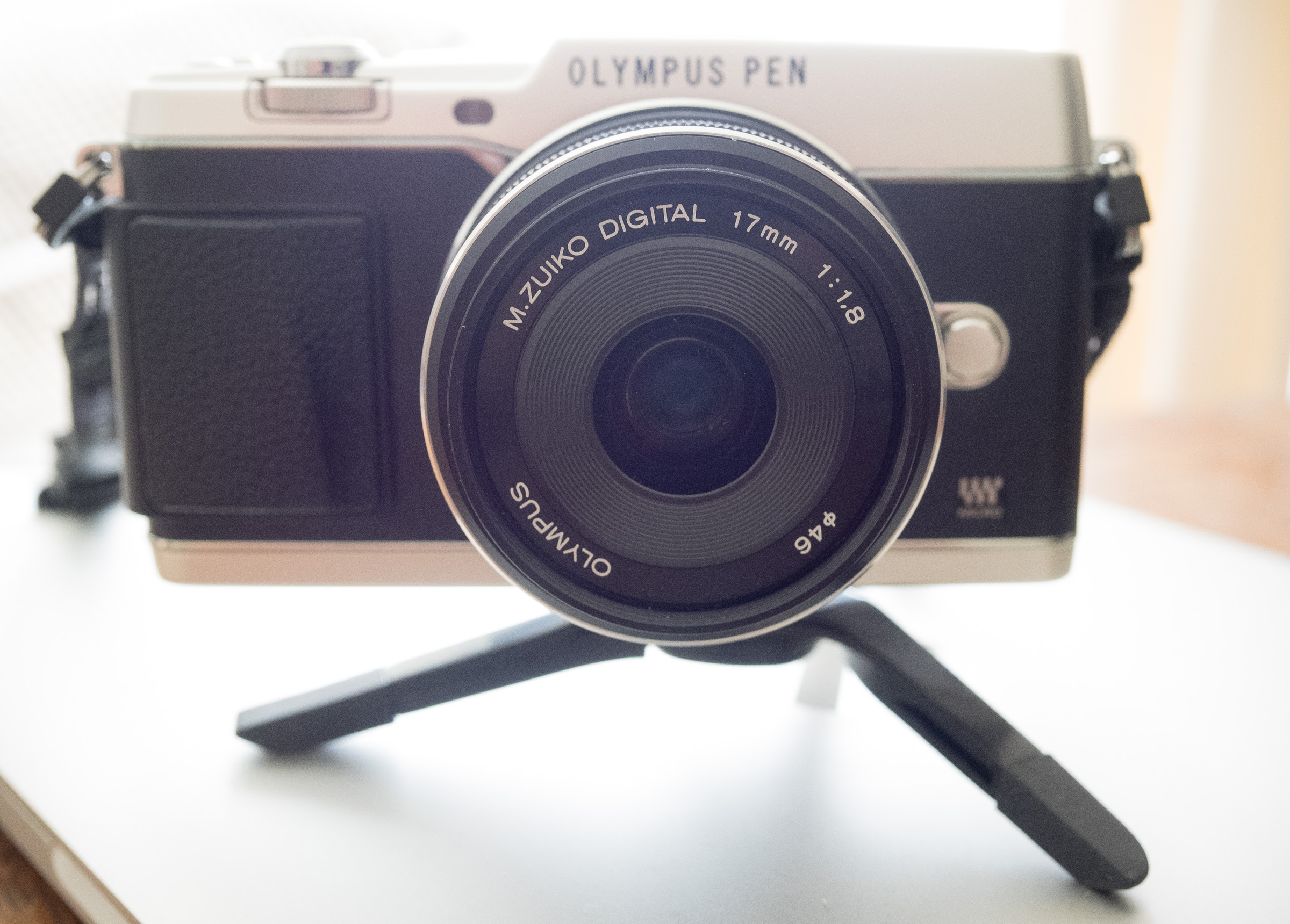Olympus Pen: Traveling Light
This is the third in a 3-part series about the Olympus Pen E-P5, possibly the most beautiful camera ever designed. The first article is "Portrait of a Camera" and the second one is "A Date In The City".
You learn to travel light if you have a distain for checking luggage. I do. That distain was born from multiple experiences of lost luggage. I confess it's also related to my impatience at the luggage carousel. I'd just rather be out taking pictures, than back at the airport, waiting. That is one of the reasons I switched to mirrorless format: portability. Recently I took off on a two-week trip to Asia carrying just the pack shown here, the Patagonia Chacabuco 32L. It's light, expands and has just the right amount of features. Patagonia always designs their products with functionality in mind but is very good at not over-engineering things. That's because their DNA comes from climbing, a sport that requires you to think very carefully about every single item you take with you. The Chacabuco has a well padded computer compartment and has plenty of room for an iPad loaded with books & movies, ample changes of clothes (focus on inner wear), an extra pair of shoes, and my ThinkTank Turnstyle 10 sling bag that carries my entire set of camera gear: E-P5, three lenses, removable electronic viewfinder, handheld flash (controlled by the built-in flash), and a mini tripod for night shots. Oh. And charger cables for all of the above. For gear heads, you won't be able to live without Apple's MacBook Pro 13" Retina which weighs only slightly more than a MacBook Air and includes a stronger processor and a beautiful retina display with up to 1680 x 1050 resolution.
What follows are some photo tips for different types of travel photography, focusing on the feature set of the Pen E-P5.
Quick Shutter
The Pen EP-5 can shoot up to 9 frames per second in high burst mode. In low burst mode, it can shoot up to 5 frames per second, while maintaining continuous autofocus on moving objects. I use low burst mode almost exclusively when I'm shooting any kind of action, including people (to capture changing expressions). Here, Thuy, from our office in Saigon, was ecstatic at bowling a strike. It may very well have been her first ever. The next photo was taken, well, 1/5 of a second later.
Zoom Later
One advantage of 16 megapixels is that it's possible to crop later and still have a photo that is printable. Here, I couldn't decide whether I liked the original photo with an emphasis on the shadows, or the close-up with emphasis on the couple - and the man's shadow. True, you can do this with any DSLR now that 24mp is the norm. Just saying, 16 works fine.
Capture Strange Photos
I guess I could haul my Nikon D800 off to lunch at the hotel, but I'd look pretty geeky doing so. However I have no problem setting the E-P5 down on the table to make this statement: "Yeah, you all have your iPhones but check out this." Moving beyond fashion, the camera is there ready for anything that comes up. Like this view of the ceiling when I looked straight up.
People People People
What I love most about the E-P5 is how small and unassuming it looks. People actually smile when they see the camera, rather than cringe. I'm not sure they would do that with my D800 affixed to my face and staring at them down the barrel of a 70-200 zoom. Most of the time I hold the camera at waist level. When I need reach, I pop on the 75mm f/1.8, which has the 35mm equivalent of a 150mm lens. It find it helpful to show people the photos that I have just taken of them. Usually that opens the door to taking more posed photos. Sometimes posed is better, sometimes not. Here's a sampling of photos taken during the course of an early morning stroll through in Gia Dinh Park in central Saigon. The photos were taken using all three lenses: 17mm f/1.8, 12-40mm f/2.8, and 75mm f/1.8.
[smugmug url="http://qamera.smugmug.com/hack/feed.mg?Type=gallery&Data=43453868_WgW6Qz&format=rss200" imagecount="12" start="1" num="12" thumbsize="Th" link="lightbox" captions="false" sort="false" window="false" smugmug="false" size="XL"]
Eye-Level
The flip up screen makes it easy to get to eye level with anyone who is close to the ground, human or otherwise. The only problem is that human subjects tend to look you in the eyes, rather than at the camera, with the result that they appear to be looking 'over' the focal plane of the photograph. Animals, on the other hand, are fine because they are more concerned with the photographic device itself and what it might do to them.
Macro Photography
For close-up photography I usually switch to manual focus. Both the 17mm and the 12-40mm have what Olympus refers to as a 'manual focus clutch' that allows you to switch the lens from auto to manual by sliding the focus ring back to reveal the distance numbers and to engage manual focus. This is much easier - and faster - than switching to manual focus using the menu. Another option is to use the "Single AF + MF" setting, available from the menu; this starts the job by focusing automatically but then allows you to take over at any time by fine-tuning manually. This works well but I found that sometimes my stubby fingers inadvertently applied a manual over-ride to what was already a well-focused picture.
For manual focus, the E-P5 has two features that really help: 10x zoom and focus peaking. The 10x zoom allows you to zoom in to the critical part that you want to have in focus; focus peaking then outlines the parts that are in focus. These two aids work well independently of each other and you may want to play around to see which you prefer. You can also combine them together, which is what I do most of the time.
Below, the first photo was taken with the 12-40 which exhibits reasonable bokeh. The second one was taken with the 75mm.
What You See Is What You Get
Mirrorless cameras allow you to view pretty much exactly how the photo will look, when you take it - not just the view, but also the focus and the exposure. This makes it much easier to make adjustments on the fly and is a good learning tool for beginners. It also helps you to see things in different ways because you can walk around with the touch screen open and in live mode, which is rather difficult to do with a DSLR pasted to your face. Try it. You'll be surprised at what you come up with. I was.
Low Light / High ISO
I was comfortable taking photos at up to ISO 3200, without much problem. This one was taken at 3200.
Slow Shutter Speeds
I prefer to take photos hand-held, even down to half a second, by bracing the camera against any inanimate object. Sometimes you can get interesting effects with slow shutter speeds while holding the camera; for example, panning to follow traffic in low light, to give motion blur to the background. Sometimes, though, it's helpful to have a tripod. I use the tiny Joby Micro 800 that is so small, it slips into the 'pens' section of my sling bag. It's easy to operate and works well with mirrorless cameras using smaller lenses. I've used it on the 12-40 zoom, but you have to align the feet so that two are angled towards the front of the camera, to keep it from tipping forward. This picture was taken at ISO 200 with an exposure time of 4 seconds at f/10. Yes, it also could have been taken hand-held; see the panorama further down in this article.
About Flash
I rarely use flash - mainly because I'm not Bill Cunningham (wish I was!), but also because I do not have the patience to set things up. I'm kinetic. Remember, I can't even stand to wait for my luggage. The Pen E-P5 has a built-in flash which I do use as flash fill when I have a darker foreground and lighter background. The photo below illustrates how I used the pop-up flash to fill in the interior, which helps even the exposure with the light coming in from outside. Another advantage of the pop-up flash is that it can be used as a command module for an external flash. In this way, you can hold an external flash out to the side at the end of your arm and trigger it when you take the photo with the camera. Tip: try the same with the 'flashlight' feature of your iPhone!
The perfect companion
The key advantage of mirrorless cameras is that you can get arguably the same quality of photos as you can with larger sensor cameras, with much smaller gear. For me, this means I can have the camera on me more often. Which means, I get more pictures. That is why I switched to mirrorless. Among mirrorless, I like the Pen E-P5 because for me it is the ideal form factor: it is small enough to drop into a large pocket (with small lens attached), yet has the features that I require for my photography: pop-up touch screen, twin dials for making adjustments, programmable function buttons and settings dial, pop-up flash when I need it and electronic viewfinder option, if/when I need it. Oh, and it's beautiful. Really. It turns heads like no other.
Bookends: 4321
To close, I'd like to illustrate the point about always having the camera with you. On my return to the U.S., I left Saigon at 5:30am, stopped over in Hong Kong to change planes, got off in San Francisco to spend a few hours with my daughter Katherine at the San Francisco Public Library, then continued on to Seattle in time for sunset: 4 cities, 3 countries, 2 continents, in 1 day.
[smugmug url="http://qamera.smugmug.com/hack/feed.mg?Type=gallery&Data=43477183_P9Mjhj&format=rss200" imagecount="4" start="1" num="4" thumbsize="Th" link="lightbox" captions="false" sort="false" window="false" smugmug="false" size="XL"]





















